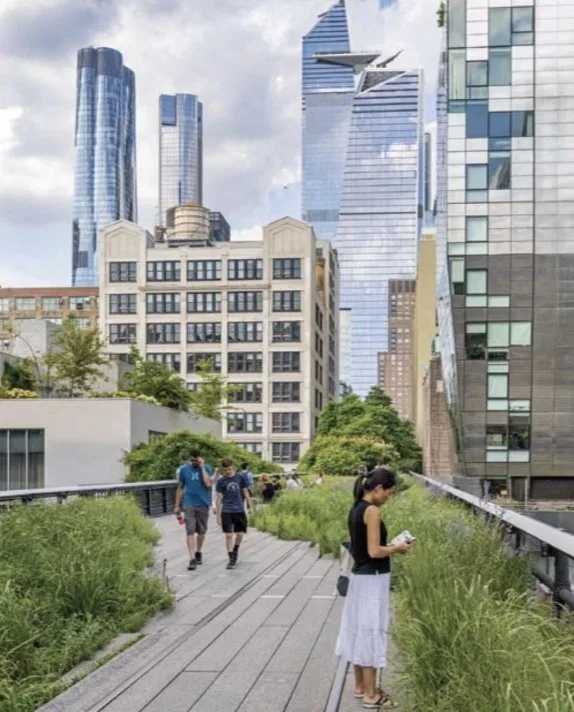When Tom Connors walked into the fourth floor offices of the Greater Astoria Historical Society (GAHS) on Wednesday, July 15, he promptly asked, “Where’s the beer?” It seemed an unlikely place for malt beverages, but sure enough, an hour later, after hearing the intoxicating history of beer gardens in New York City and in Queens, there was Connors, a brew in his hand and a smile on his face.
And so it was at the latest in GAHS’ lecture series where those like Connors – and some a little keener on history and less so on libation – learned about New York City’s beer garden culture and got to sample some of its wares.
“You can’t go wrong with beer,” GAHS Past-President and trustee Deborah Van Cura said with a laugh, explaining how she came to combine her historical lecture with a tasting.
Over the course of an hour, Van Cura led the crowd of around 15 on a tour of Manhattan and Queens starting around the turn of the 19th Century, when taverns gave way to so-called “pleasure gardens” that served up lemonade, ice cream and shade for the wealthy.
The working class, on the other hand, frequented beer halls, which, with the help of German immigrants – whose lager beer crossed the Atlantic Ocean with them around 1840 – evolved into outdoor beer gardens with amusements for the entire family.
“To understand the beer garden you really need to really look back into our own history about the role that the taverns played,” Van Cura told the audience, explaining that taverns were the “multi-purpose centers” of lodging, meetings and, in one case, even the seat of city government.
Outdoor beer gardens, Van Cura noted, were “really an answer to heat on the inside and a nice way to cool off on the outside,” but they blossomed over time.
The earliest beer gardens were in lower Manhattan, she said, but as German immigrants moved to Queens, there was no way they were leaving their beloved gardens behind.
Proprietors of beer gardens welcomed the newfound space in Queens by including old-world elements like picnic grounds and dance floors that had not fit in their cramped Manhattan quarters. Some, on the water, featured swimming and clam bakes.
Beer gardens sprouted across Queens in neighborhoods like Glendale, Ridgewood, Maspeth, College Point and Jamaica. They had names like Richter’s Cypress Hills Park – now home to a stretch of the Jackie Robinson Parkway – Joseph Witzel’s Point View Island – today a sewage treatment plant – and North Beach, the site of LaGuardia Airport.
Some vanished during Prohibition and in subsequent decades, Van Cura said, due to a variety of factors including a rejection of German culture in the wake of World War I, the prevalence of the automobile, which allowed people to easily travel beyond their community’s limits, and the emergence of other forms of entertainment.
However, Astoria’s Bohemian Hall and Beer Garden, long famous for its status as the last remaining beer garden, no longer holds that mantle after what Van Cura considers a recent beer garden “upturn.”
In fact, many in the crowd at the GAHS that night were beer garden devotees and certifiable beer aficionados. During the tasting, they clinked plastic cups, smelled their beers – GAHS served two lagers, an India Pale Ale, a pilsner and a porter – savored the aftertaste and cleansed their palettes between rounds, as Van Cura instructed them to.
Naturally, Tom Connors’ early enthusiasm had not dwindled when it came time for the tasting.
“Now I know why I drink a lot,” he joked, by way of offering his reaction to the beer history lesson.
Similarly, when Don Fedynak, of Astoria, was asked what brought him to the event, he responded with a smile and raised eyebrows, “The beer! What else?”
However, Fedynak quickly added he had been intrigued by the lithographs of North Beach, which some of his older relatives had frequented.
“It’s nice to see the resurgence of the beer garden,” Fedynak said, registering surprise at how many beer gardens there used to be.
For Van Cura, a board member of Bohemian Hall’s benevolent society who recalls beer garden outings as a youngster, it has always been about more than just the beer. Her nostalgia is hard to miss – even after a few cold ones.
“It really does prove,” she said at the end of her lecture, “that a formula that was started many, many years ago, of cool air on a hot night with a cold beer still works.”































